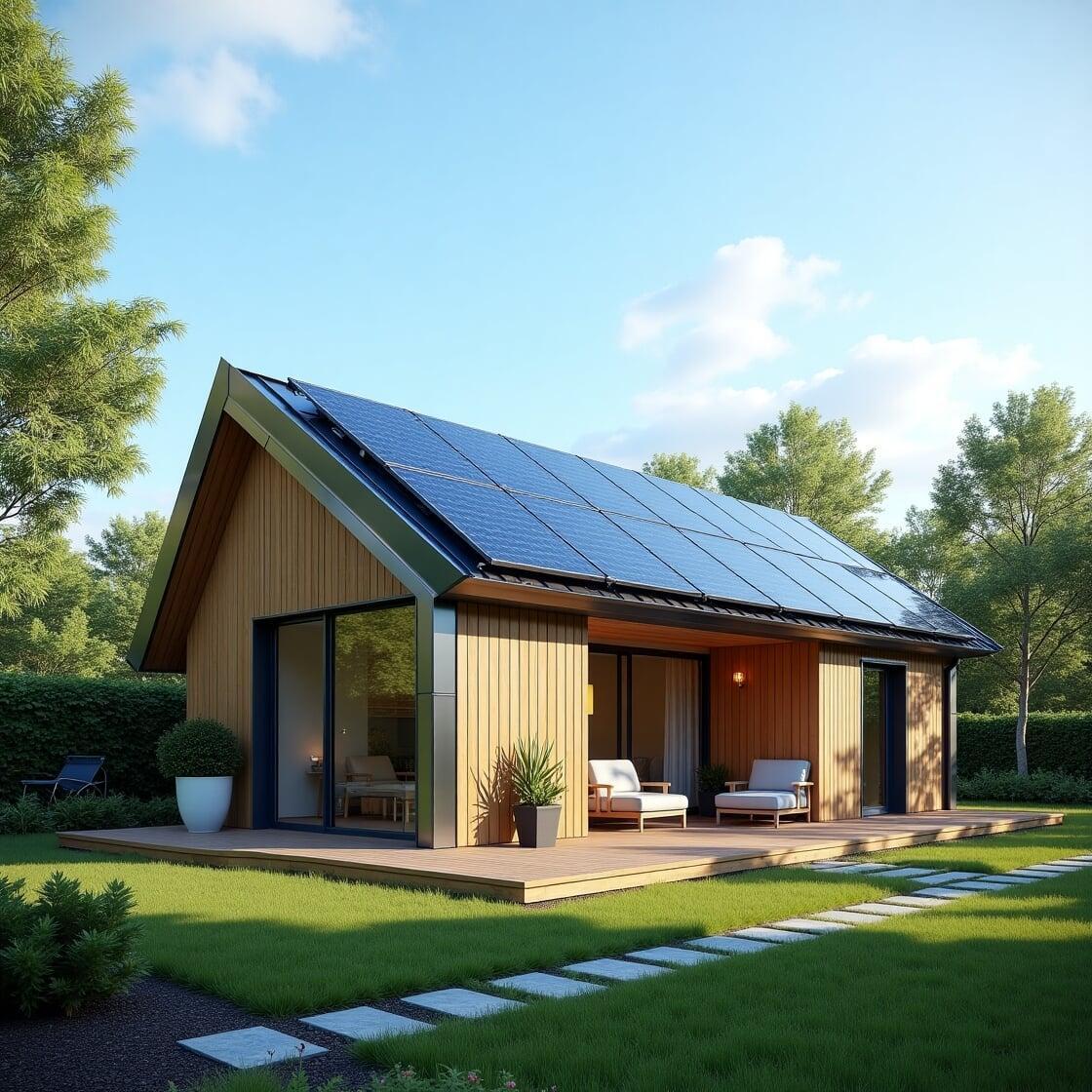
1. What Are Prefab & Sustainable ADUs?
Prefab ADUs (prefabricated ADU) are secondary homes built off-site in climate-controlled factories, then transported and assembled on your property. This method enables:
Speed: Builds up to 50–60 % faster than on-site construction.
Quality & precision: Factory settings ensure consistent quality and tighter tolerances.
Eco-efficiency: Reduced construction waste, tightly controlled material use, and minimized carbon emissions
Sustainable ADUs go further—built with renewable energy systems, eco-friendly materials like cross-laminated timber or straw panels, low-VOC finishes, and smart-home tech integration.
2. Why Prefab ADUs Are Scaling Up
2.1 Faster & More Affordable Builds
Factory-based builds eliminate weather delays and minimize on-site labor. You can save 30–50 % time and up to 20 % costs compared to traditional methods.
2.2 Enhanced Sustainability
Advantages include:
Up to 50 % less material waste, thanks to precision fabrication.
Lower carbon footprint through fewer site deliveries and efficient resource use.
Use of green materials: cross-laminated timber, recycled steel, straw panels, reclaimed wood.
2.3 Superior Quality
Factory-built means rigorous quality control and consistent standards; modules are less susceptible to on-site moisture, errors, and weather damage.
3. Emerging Trends in Prefab Sustainable ADUs
Smart features: Integration of IoT, smart thermostats, LED, solar panels, smart locks, and energy monitoring systems.
Digital precision: BIM and Digital Twins improve planning accuracy, reduce errors, and streamline collaboration.
Advanced materials: Sustainable elements like CLT, bio-composites, recycled steel, and low-toxic finishes.
Off-grid readiness: Solar, battery storage, graywater, and green roofing are increasingly built-in.
Scalability: Modular units that can be combined, expanded, or reconfigured—ideal for evolving homeowner needs.
4. Real-Life Examples
Plant Prefab (Sunset BUD LivingHome): Wildfire-resistant modular ADUs with aluminum cladding and fire-optimized finishes.
New Frameworks (Vermont): Eco-conscious straw-panel, low-VOC prefab cottages promoting healthy natural living.
BrightBuilt Home / Unity Homes: High-performance prefab ADUs in Maine with airtight construction and quality finishes.
5. Benefits & Challenges Summary
| Benefits | Challenges |
|---|---|
| Faster delivery—built in months, not years | Site prep and utility setup still required |
| Cost predictability and reduced overruns | Transport logistics and permits |
| Eco-friendly and low-waste build process | Perception hurdles on design flexibility |
| Consistent factory-grade quality | Upfront manufacturing costs |
| Smart-home integration and durable materials | Coordination between platemaker and onsite teams |
6. How to Launch a Prefab Sustainable ADU Project
Define goals – Size, sustainability targets, smart features.
Choose provider – Look for companies with green certifications and energy-efficient track records.
Pre-design in BIM – Map modules, utilities, and site prep digitally.
Permitting & site prep – Lodge plans early; secure foundation, hookup points.
Factory build – Modules assembled concurrently with on-site prep.
Delivery & install – Track shipment; assemble on-site swiftly.
Finish & commission – Connect utilities, smart systems, finalize inspections.
Maintenance plan – Sustainability systems support: solar, insulation, sensors.
FAQ
Final Takeaway
Prefab & sustainable ADUs are accelerating backyard housing evolution—we’re seeing faster completion, lower environmental impact, and smarter living spaces. By combining green materials, modular tech, and digital design, they revolutionize home extensions. If you value speed, quality, eco-friendliness, and future-proof flexibility, prefab ADUs are the solution for your next project.
Related Articles:
How to Get an ADU Permit in San Diego
